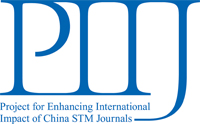Background
Hemorrhoids are one of the most common conditions that lead to surgery, and until now surgical hemorrhoidectomy has been the major effective treatment. Post-operative pain from hemorrhoidectomy has been experienced by thousands of patients and remains a major inconvenience of the operation.
Objective
This study evaluates the clinical efficacy of the pestle needle therapy, an acupoint stimulation method, for relief of post-hemorrhoidectomy pain.
Design, setting, participants and interventions
This was a single-center, patient-assessor-blinded and randomized controlled trial with 154 patients receiving Milligan hemorrhoidectomy surgery. Eligible patients were randomly assigned to either a treatment group or a control group at a ratio of 1:1. The treatment group received the pestle needle therapy, with manual stimulation at Yaoshu (DU2), Mingmen (DU4), Changqiang (DU1), Chengshan (BL57), Erbai (EX-UE2) and the perianal points (1, 3, 5, 7, 9, and 11 o’clock around the lesion); while the control group received a sham treatment with very light pressure. Three sessions of treatment were performed at 30 min, 4 h and 12 h after the surgery, and each lasted for 15 min.
Main outcome measures
The primary outcome was post-operative pain measured with the visual analogue scale (VAS) at 12 h after surgery. The secondary outcomes included the VAS scores measured at 0.5, 2, 4, 6, 8, 24 and 48 h after surgery, the analgesic dose, the time and the VAS score of the patients’ first defecation after surgery, as well as the Hamilton Rating Scale for Anxiety (HAMA) evaluated before discharge.
Results: The mean pain score of the treatment group was significantly lower than that of the control group (3.10 ± 1.27 vs 4.82 ± 1.29; P < 0.001) at 12 h after surgery. Compared with the control group, patients in the treatment group needed a smaller dose of analgesic within the first 24 hours after surgery (P = 0.002); and their HAMA scores before discharge were lower (4.07 ± 2.40 vs 5.10 ± 2.45, P = 0.009). Compared to the treatment group, patients in the control group had a greater time to the first defecation after surgery ([52.34 ± 15.72] h vs [27.08 ± 13.68] h; P < 0.001), but there was no difference in their VAS scores at the first defecation (P = 0.092).
Conclusion
The pestle needle therapy was effective for relieving pain, reducing anxiety and improving bowel function after hemorrhoidectomy, and it is worthy of clinical application.
Trial registration
Chinese Clinical Trial Registry (ChiCTR1900022329).
 Table of Content
Table of Content














